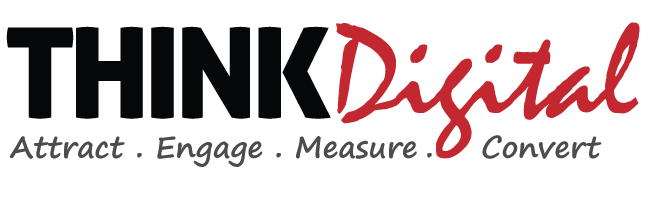Online tools have now become a major component of learning and development programmes in the corporate world.
The world is hurtling towards a culture of ease. Product designs are dictated by considerations of ready access and quicker response. In fact, this thinking permeates all spheres of activity, which include growing human capital. In other words, training programmes for employees, crafted in-house or outsourced, now invariably come with a digital component. Digital training tools serve multiple purposes. They make the training an ongoing process. They ensure continual reinforcement of lessons. They reduce outlay on training programmes. Most important of all, they save time. “Companies are increasingly encouraging its employees to take management and learning-and-development related courses on reputed digital learning platforms, which include Coursera, Udemy and Simplylearn . Many of these popular platforms may offer these courses free, but charge if the participant requires a certification, which includes taking an examination, and many companies are now prepared to sponsor these certification programmes. There are also many companies now that have e-learning tools designed to drive their learning and development programmes. They may outsource the designing of these tools, but drive the programmes themselves, which ensures they have greater control over the content. While training their freshers, many companies work out a combination. Fifty percent of these freshers would be trained in a traditional classroom setting, which requires them to stay away from regular work, and the other fifty would be trained through a digital platform that can be accessed anytime and therefore, allows them to continue doing the regular work — this way, these companies ensure work is not hindered,” explains Sorav Jain, digital marketing consultant and thinker-in-chief at echoVME. As everyone is under the sway of digital technologies, training service providers are challenged to use these resources effectively to deliver a programme that can be accessed anytime. To give one example, as part of the training tools for its clients, Kestone Intergrated Marketing Services offers a customised app aimed at sales personnel.
“In a crowded market, a company cannot afford to send its sales force to the training room often. At the same time, the sales personnel have to be skilled in selling techniques and know how to plan their time in meeting their targets. The solution lies in providing them with a resource that they can access on the go,” explains Piyush Gupta, president, Kestone.
Training institutions can establish a long-lasting connection with those in the industry they are serving through a digital programme that supplements the traditional classroom traning.
Here’s an example. Scaled Agile Academy offers training and certification in Scaled Agile Framework (called SAFe), which includes teaching of Agile and Scrum methodologies geared towards better management of enterprises. In 2016, the Academy ensured its students were updated on the latest SAFe practices by launching a massive online programme. “In 2016, the Academy launched SAFe 4.0, which was an upgrade on SAFe 3.0. To enable those who were trained and certified in SAFe 3.0 to update their skills, it offered SAFe 4.0 to them through a webinar and e-learning model, sparing them the trouble of going through a classroom-based learning process,” says Mahesh Varadharajan, senior Agile consultant, SolutionsIQ.
Source | The Hindu | 14 September 2016
The world is hurtling towards a culture of ease. Product designs are dictated by considerations of ready access and quicker response. In fact, this thinking permeates all spheres of activity, which include growing human capital. In other words, training programmes for employees, crafted in-house or outsourced, now invariably come with a digital component. Digital training tools serve multiple purposes. They make the training an ongoing process. They ensure continual reinforcement of lessons. They reduce outlay on training programmes. Most important of all, they save time. “Companies are increasingly encouraging its employees to take management and learning-and-development related courses on reputed digital learning platforms, which include Coursera, Udemy and Simplylearn . Many of these popular platforms may offer these courses free, but charge if the participant requires a certification, which includes taking an examination, and many companies are now prepared to sponsor these certification programmes. There are also many companies now that have e-learning tools designed to drive their learning and development programmes. They may outsource the designing of these tools, but drive the programmes themselves, which ensures they have greater control over the content. While training their freshers, many companies work out a combination. Fifty percent of these freshers would be trained in a traditional classroom setting, which requires them to stay away from regular work, and the other fifty would be trained through a digital platform that can be accessed anytime and therefore, allows them to continue doing the regular work — this way, these companies ensure work is not hindered,” explains Sorav Jain, digital marketing consultant and thinker-in-chief at echoVME. As everyone is under the sway of digital technologies, training service providers are challenged to use these resources effectively to deliver a programme that can be accessed anytime. To give one example, as part of the training tools for its clients, Kestone Intergrated Marketing Services offers a customised app aimed at sales personnel.
“In a crowded market, a company cannot afford to send its sales force to the training room often. At the same time, the sales personnel have to be skilled in selling techniques and know how to plan their time in meeting their targets. The solution lies in providing them with a resource that they can access on the go,” explains Piyush Gupta, president, Kestone.
Training institutions can establish a long-lasting connection with those in the industry they are serving through a digital programme that supplements the traditional classroom traning.
Here’s an example. Scaled Agile Academy offers training and certification in Scaled Agile Framework (called SAFe), which includes teaching of Agile and Scrum methodologies geared towards better management of enterprises. In 2016, the Academy ensured its students were updated on the latest SAFe practices by launching a massive online programme. “In 2016, the Academy launched SAFe 4.0, which was an upgrade on SAFe 3.0. To enable those who were trained and certified in SAFe 3.0 to update their skills, it offered SAFe 4.0 to them through a webinar and e-learning model, sparing them the trouble of going through a classroom-based learning process,” says Mahesh Varadharajan, senior Agile consultant, SolutionsIQ.
Source | The Hindu | 14 September 2016


 RSS Feed
RSS Feed
